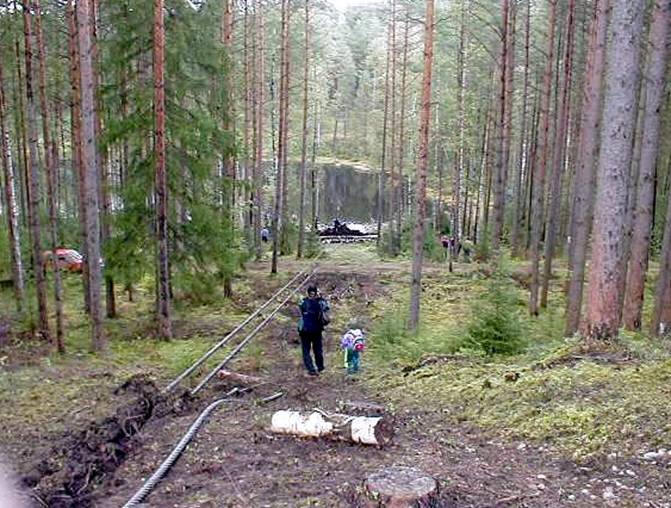
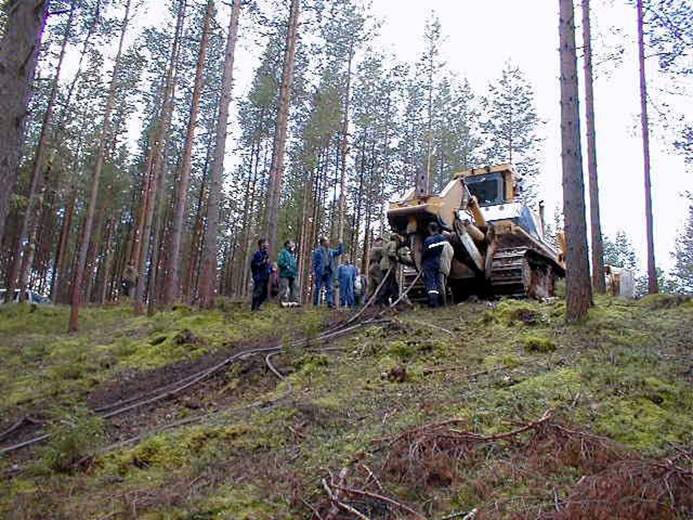
Russian T34
Sent: Saturday, March 03, 2007 4:16 PM Subject: Russian Tank
Even after 62 years (and a little
tinkering,) they were able to fire up the
Diesel Engine!
A
Komatsu D375A-2 pulled an abandoned tank
from its archival tomb under the bottom of a
lake near Johvi , Estonia . The Soviet-built
T34/76A tank had been resting at the bottom
of the lake for 56 years. According to its
specifications, it's a 27-ton machine with a
top speed of 53km/h.
From February to September 1944, heavy
battles were fought in the narrow, 50
km-wide, Narva front in the north-eastern
part of Estonia . Over 100,000 men were
killed and 300,000 men were wounded there.
During battles in the summer of 1944,
the tank was captured from the Soviet army
and used by the German army. (This is the
reason that there are German markings
painted on the tank's exterior.)
On 19 September 1944, German troops began an
organized retreat along the Narva front. It
is suspected that the tank was then
purposefully driven into the lake,
abandoning it when its captors left the
area.
At that time, a local boy walking by the
lake Kurtna Matasjarv noticed tank tracks
leading into the lake, but not coming out
anywhere. For two months he saw air bubbles
emerging from the lake. This gave him reason
to believe that there must be an armored
vehicle at the lake's bottom. A few years
ago, he told the story to the leader of the
local war history club 'Otsing'. Together
with other club members, Mr. Igor Shedunov
initiated diving expeditions to the bottom
of the lake about a year ago. At the depth
of 7 metres they discovered the tank resting
under a 3-metre layer of peat.
Enthusiasts from the club, under Mr
Shedunov's leadership, decided to pull the
tank out. In September 2000 they turned to
Mr Aleksander Borovkovthe, manager of the
Narva open pit of the stock company AS Eesti
Polevkivi, to rent the company's Komatsu
D375A-2 bulldozer. Currently used at the
pit, the Komatsu dozer was manufactured in
1995, and has 19,000 operating hours without
major repairs.
The pulling operation began at 09:00 and was
concluded at 15:00, with several technical
breaks. The weight of the tank, combined
with the travel incline, made a pulling
operation that required significant muscle.
The D375A-2 handled the operation with power
and style. The weight of the fully armed
tank was around 30 tons, so the active force
required to retrieve it was similar. A main
requirement for the 68-tonne dozer was to
have enough weight to prevent shoe-slip
while moving up the hill.
After the tank surfaced, it turned out to be
a trophy tank, that had been captured by the
German army in the course of the battle at
Sinimaed (Blue Hills) about six weeks before
it was sunk in the lake. Altogether, 116
shells were found on board. Remarkably, the
tank was in
good condition,
with
no rust,
and
all systems (except the engine) in working
condition.
This is a very rare machine, especially
considering that it fought both on the
Russian and the German sides. Plans are
under way to fully restore the tank. It will
be displayed at a war history museum, that
will be founded at the Gorodenko village on
the left bank of the River Narv.


Preparing
to pull
it out.
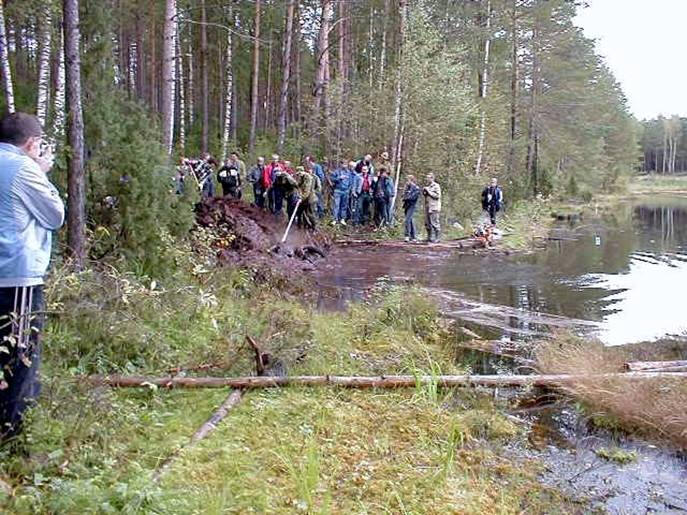
People from the nearby village come to look how it would be done.

Komatsu D375A-2 is ready to go.
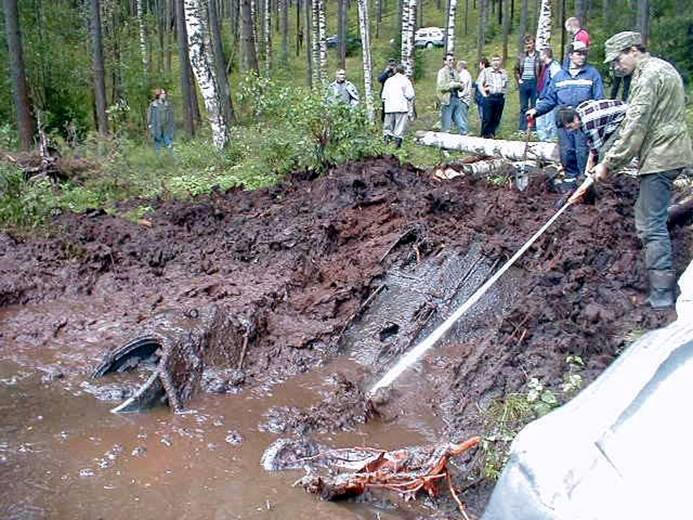
Here it comes...
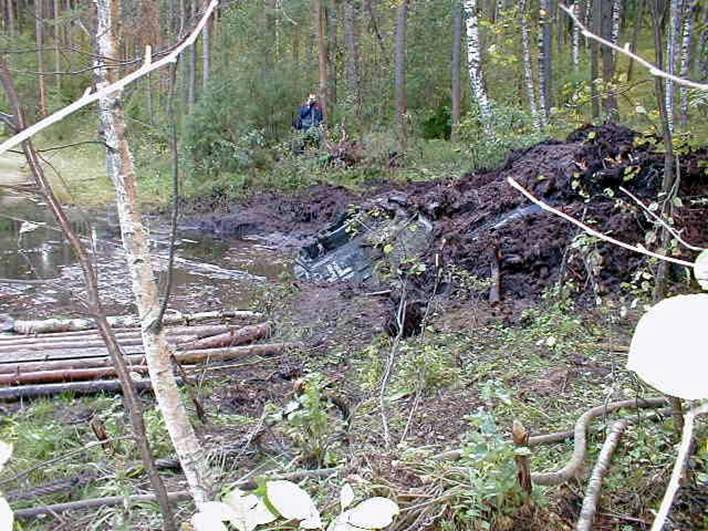
Through muddy shore of the lake
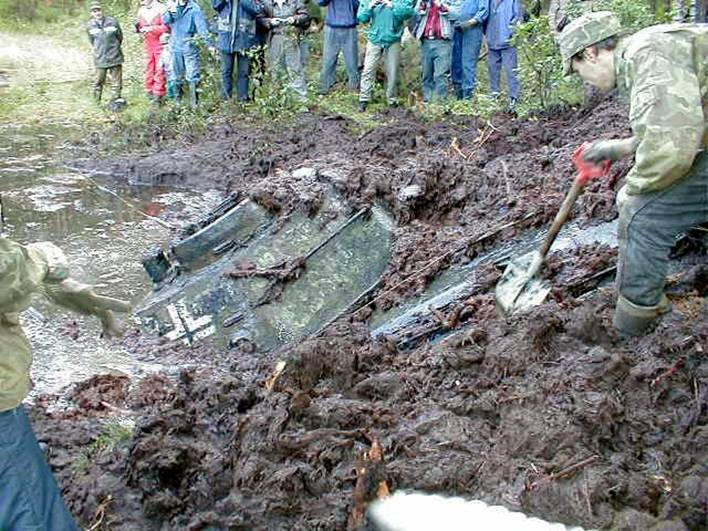
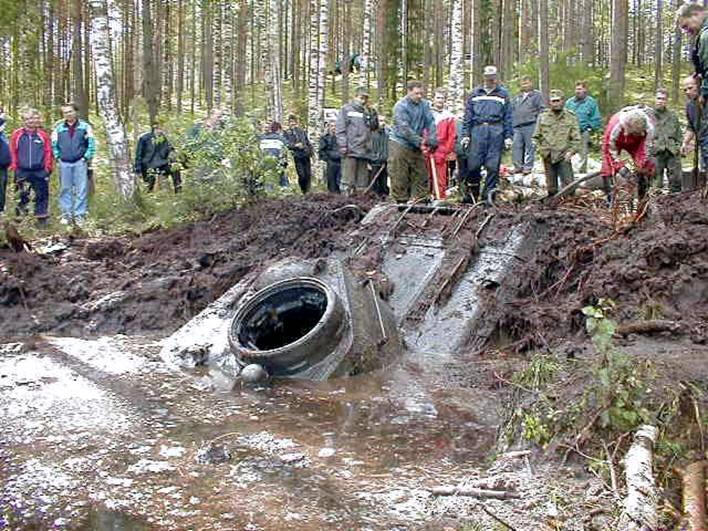
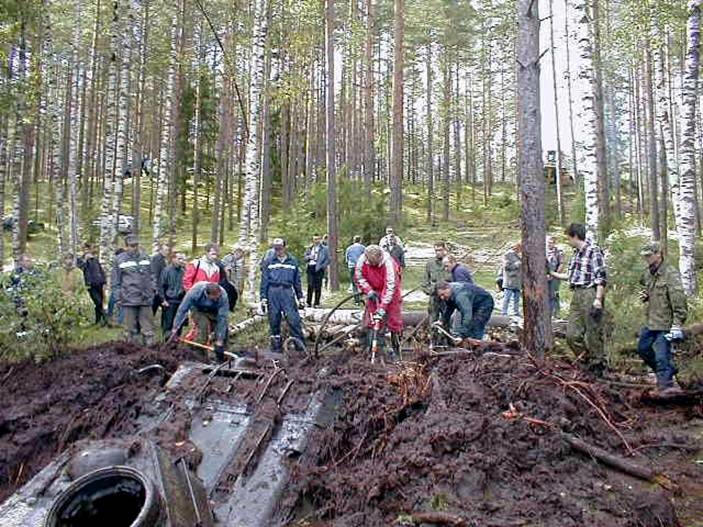
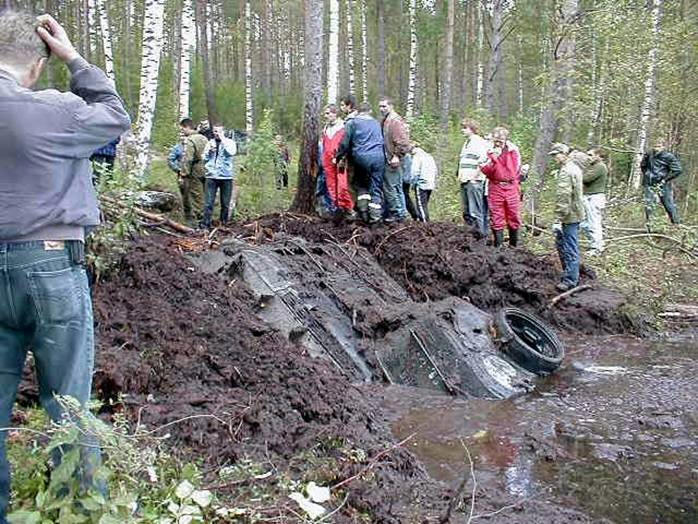
What a mint condition.
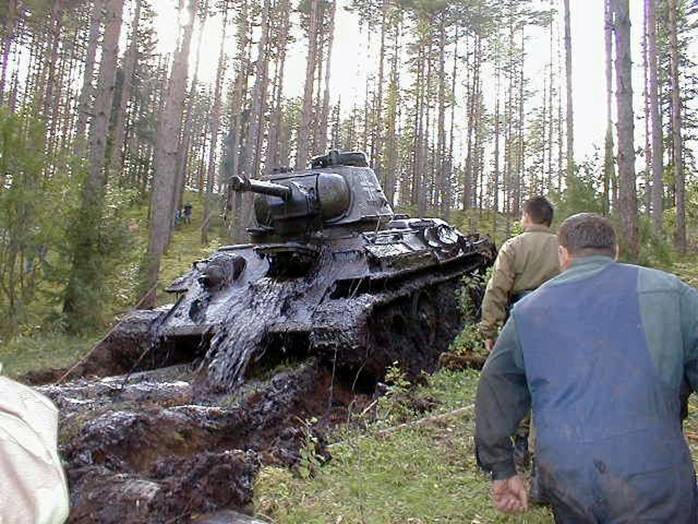
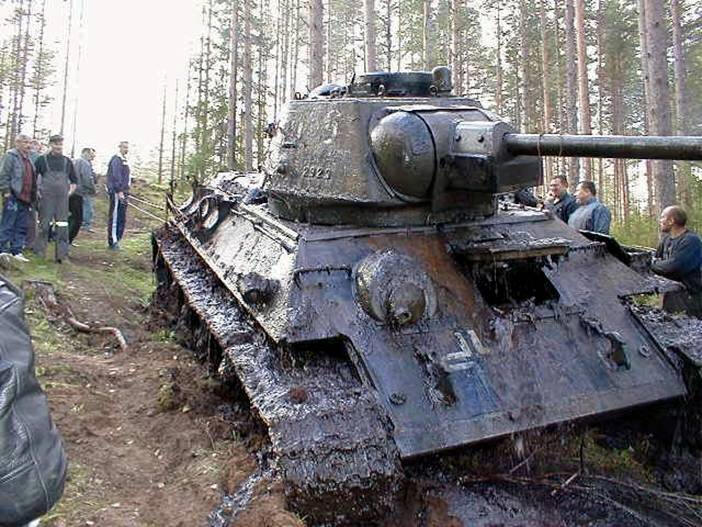
Hosing off 62 years worth of "muck."
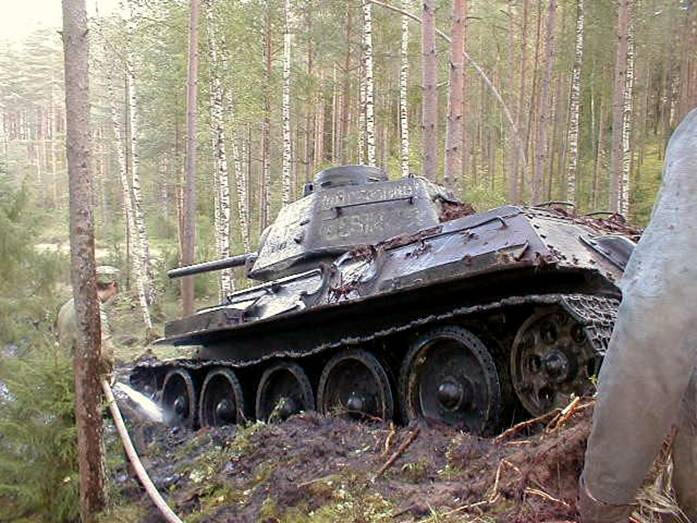
As far as it has been known, after a small repair and service they were able to start its diesel engine.
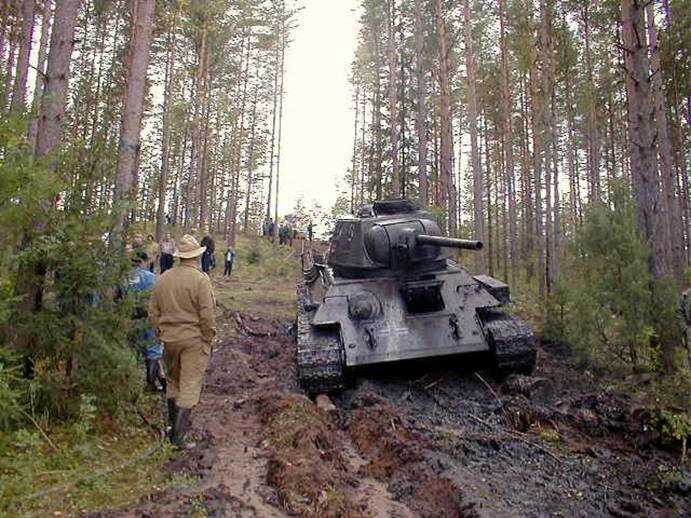
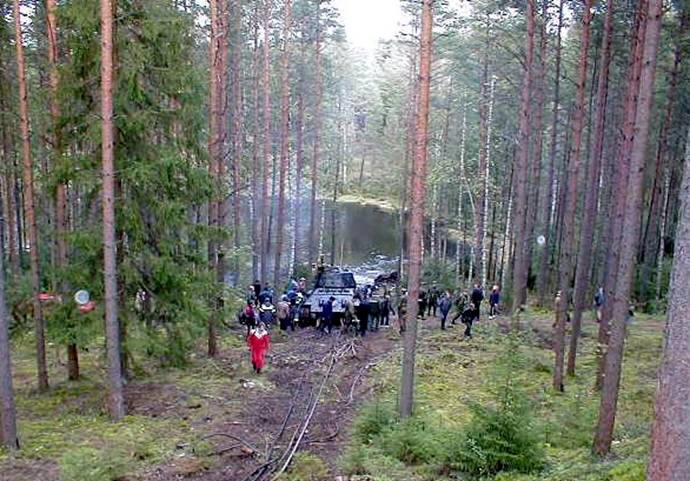
They
don't
build 'em
like
they
used to!